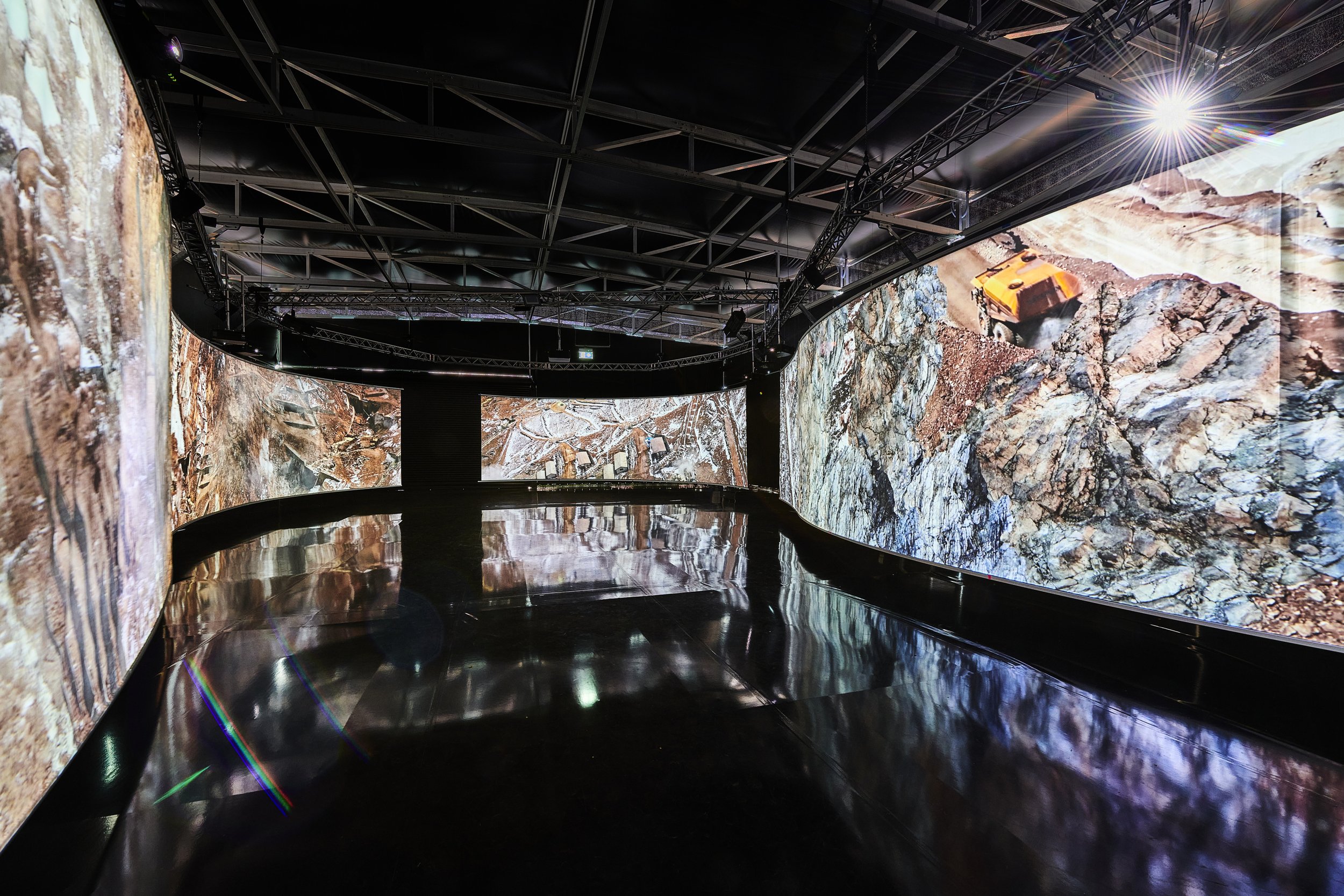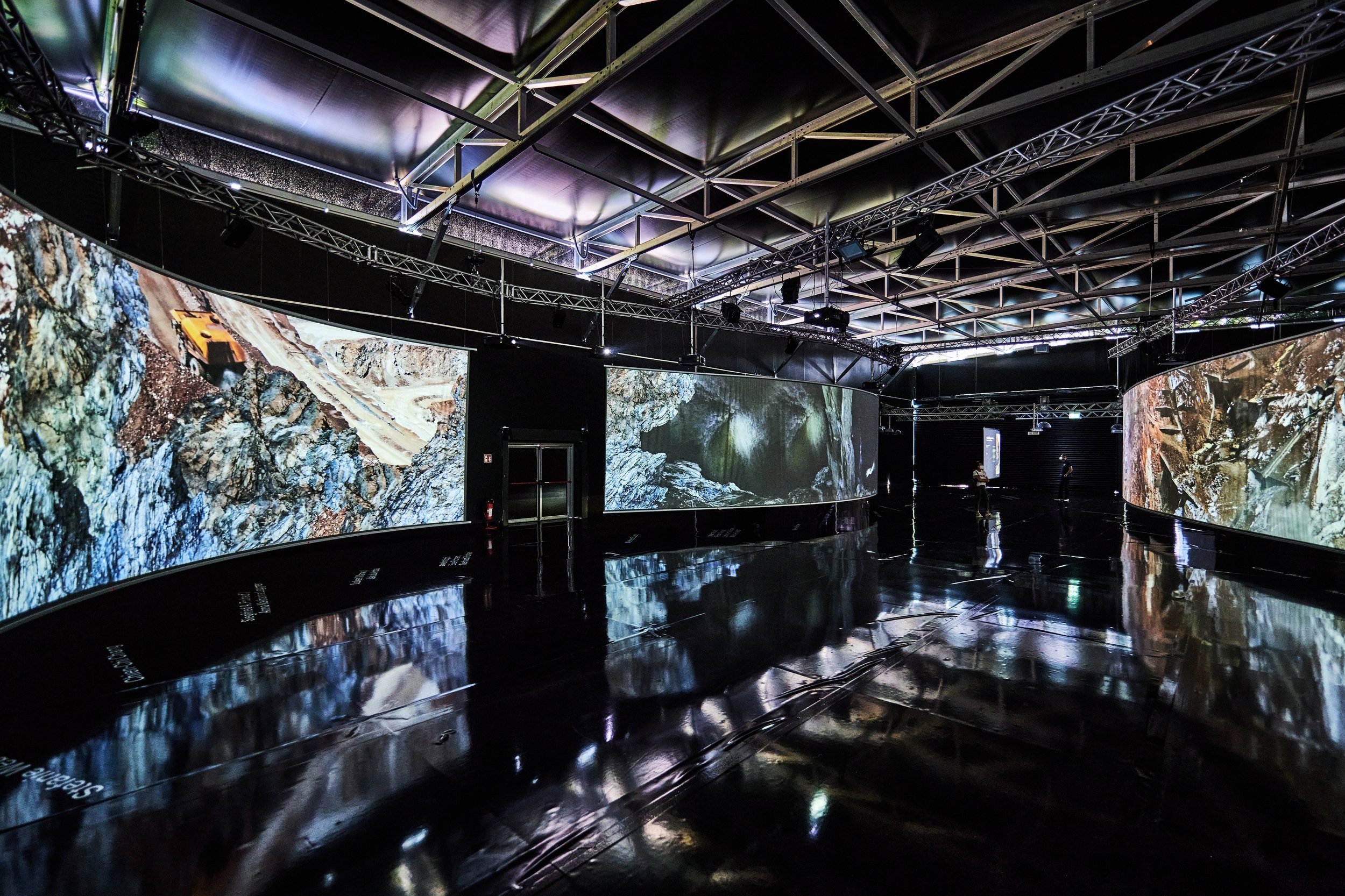Steiermarkschau/ mobile Pavilion, 2020
Claudia Larcher's video ORE (2018 / 2020) is adapted for the surface of the panorama. The 50 image layers from which she assembled a huge mining area provided her with a correspondingly immense volume of data. As if slowly floating down through the clouds, the view descends ever deeper onto the structures of an endless mining area. It is a composition of images of the Styrian Erzberg, supplemented by mining areas from the Asian region. One recognises the details of the industrial landscape more and more precisely until the gaze dives into the rock formations of the “Frauenmauer” cave. Claudia Larcher thus brings into focus the drastic reshaping of the landscape by man, which can no longer be reversed.
Panoramic canvases were an invention of the late 18th century. These monumental circular paintings depicted close-to-nature and detailed views of distant countries and cities or striking historical events. They were shown in separate exhibition halls or transported from town to town as mobile exhibitions. The panorama shaped the 19th century as an early mass medium and is considered a predecessor of photography and film.
In the mobile pavilion, the aesthetic persuasiveness of the panorama is used to present the diversity of art, culture and landscape in Styria. The panorama in this exhibition also makes seeing a comprehensive experience. Artists were invited to deal with Styrian landscapes on film. These 24 short art contributions were elaborately created for the 50-metre screen.
www.mobilerpavillon.at/




